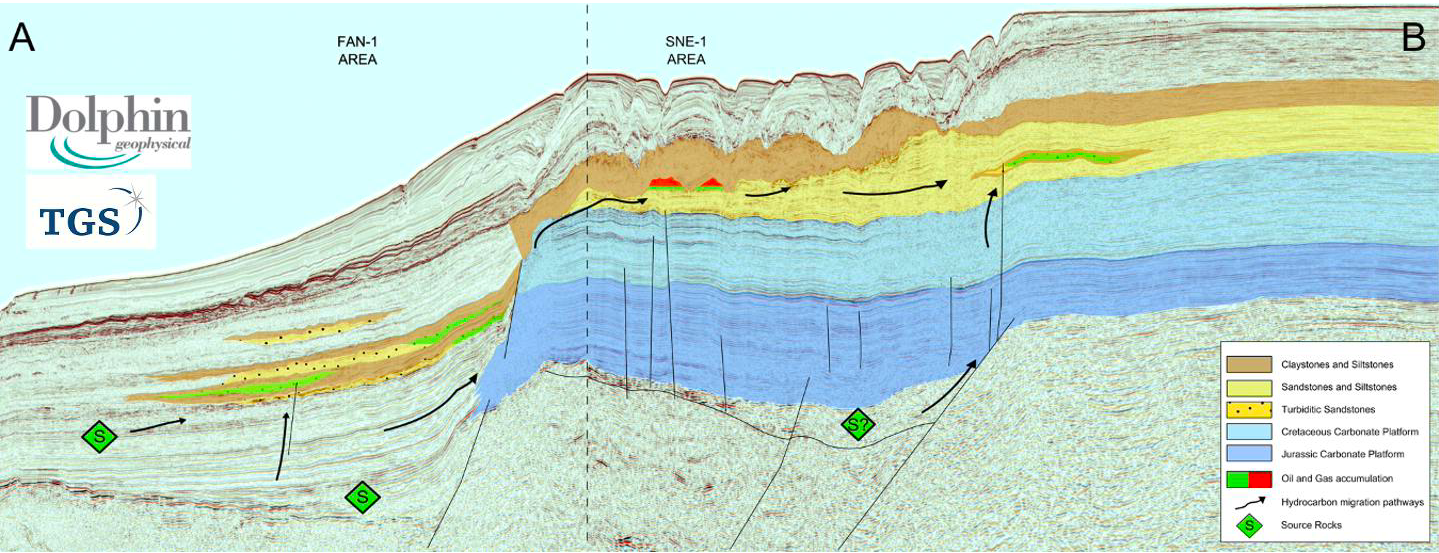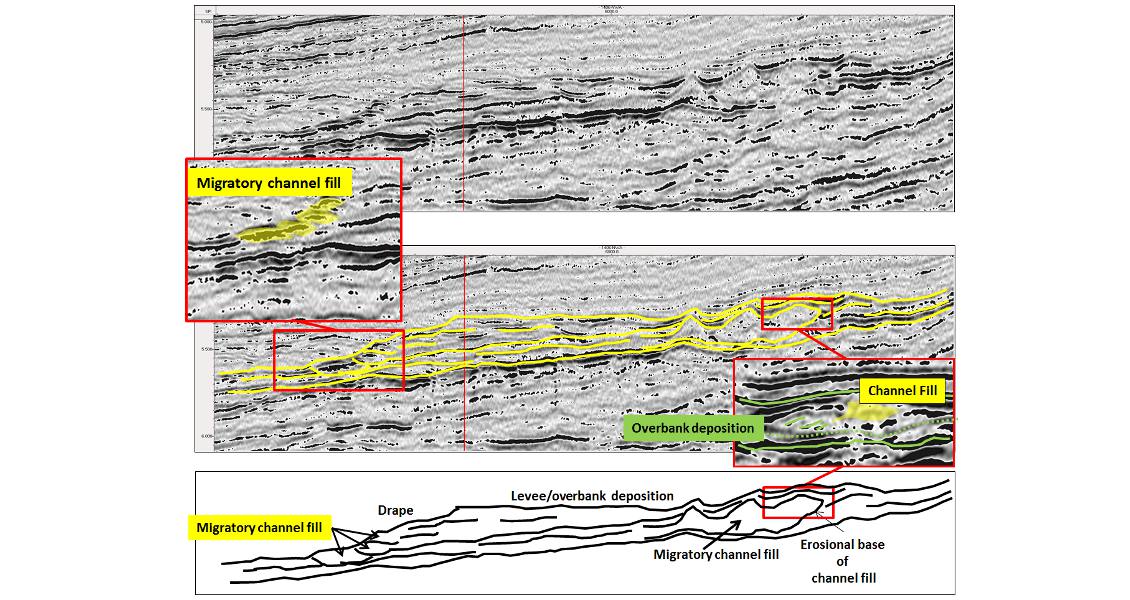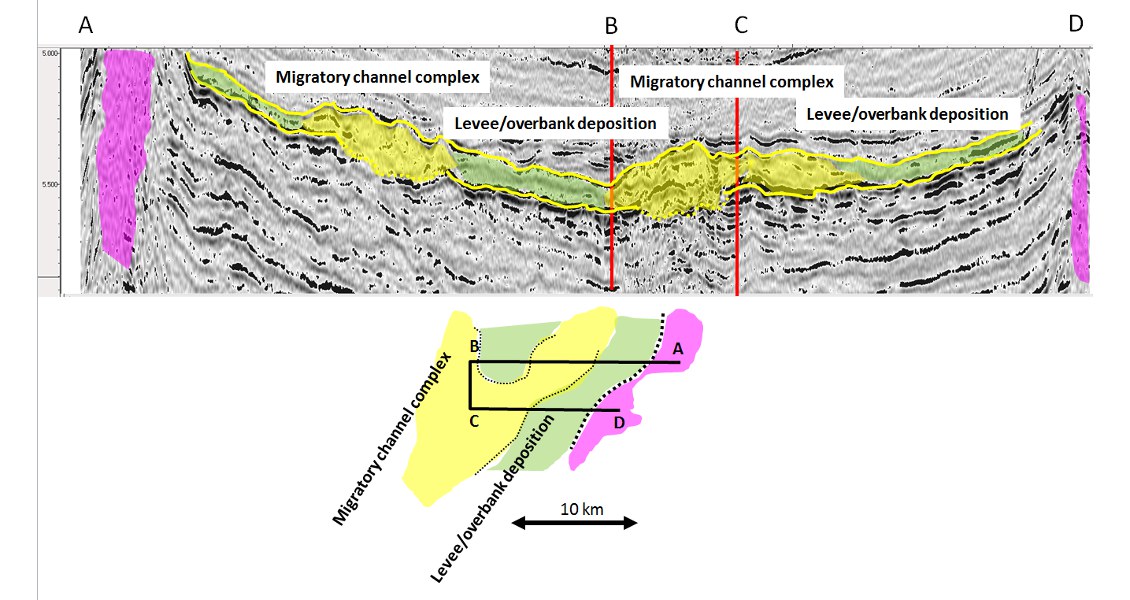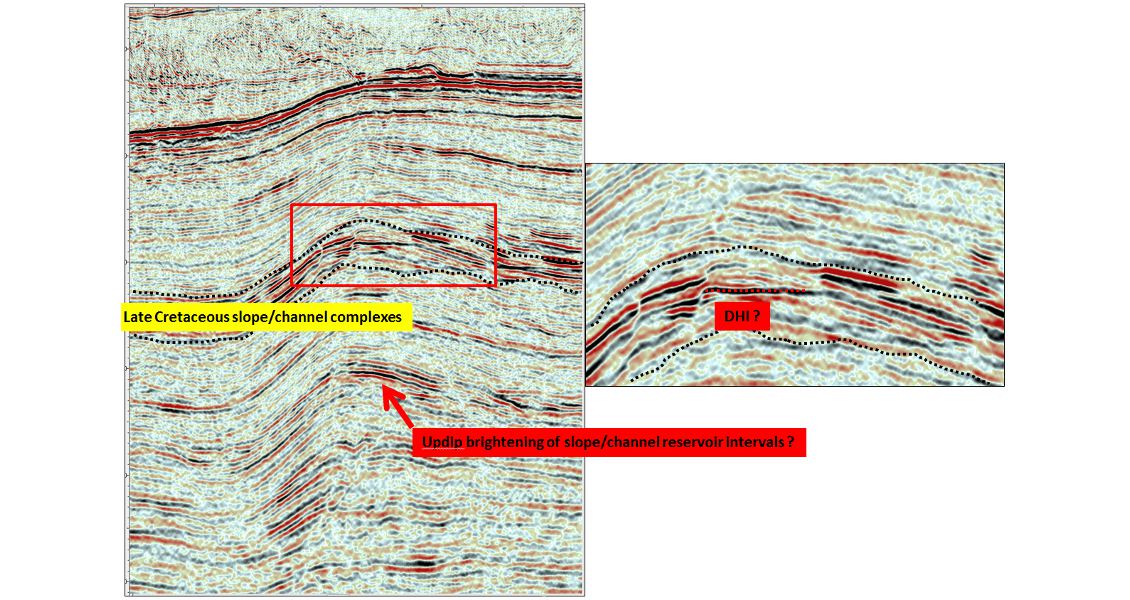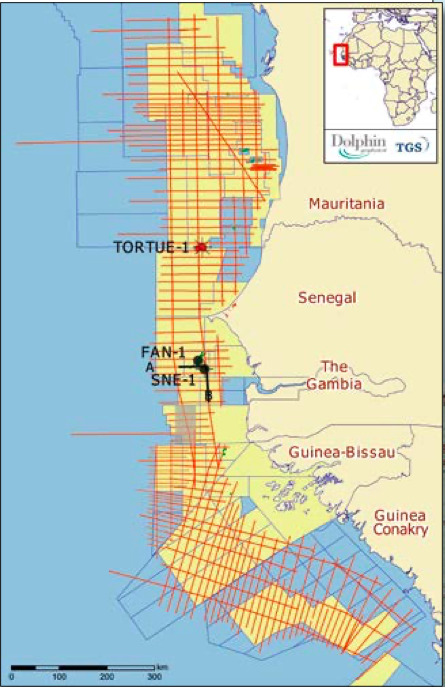
Slope/Channel Complexes Offshore North West Africa
Newly acquired and reprocessed seismic reveals potential masked by complex geometries.
In 2011 TGS and Dolphin Geophysical acquired a regional seismic dataset (NWAAM) consisting of 17,764 km of 2D seismic with a record length of 9 seconds and which covered the margin of four countries – Senegal, The Gambia, Guinea Bissau and Guinea Conakry. This survey was followed by the acquisition of NWAAM Phase 2, which again was jointly acquired by TGS and Dolphin Geophysical in 2012. The Phase 2 survey consists of some 11,212 km of 2D seismic data with a record length of 14 seconds and covers the entire offshore margin of Mauritania. The location of the combined NWAAM datasets, and associated recent discoveries, are shown on the location map in Figure 1, above.
Geological overview
The offshore geology of the NWAAM has been shaped by the evolution of the rift system that started with the Late Permian breakup of the African, North American and South American Plates. The area underwent three main tectonic phases: pre-rift, syn-rift, and post-rift. The pre-rift phase occurred in the Proterozoic-Paleozoic, the syn-rift phase in the Permo-Triassic, and a post-rift/drift phase occurred up to the present day (Brownfield and Charpentier, 2003).
All the elements of active petroleum systems have been confirmed by drilling, with source rocks proven in the Barremian, Cenomanian, and Turonian by deep sea drilling (DSDP-367). Exploration wells to date have proved a range of sandstone reservoirs ranging from Early Cretaceous (Loup de Mar-1), through Late Cretaceous (Faucon-1), to Late Tertiary (Chinguetti Field).
Ahmeyim Discovery
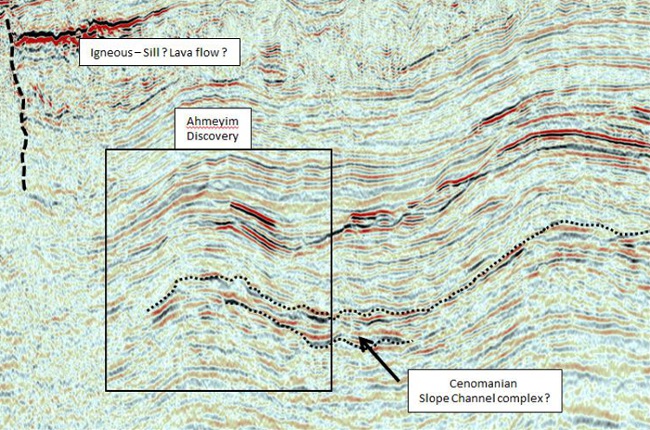
Figure 3 – NWAAM 2D seismic across the Ahmeyim discovery. (Source: Dolphin/TGS)Kosmos’s Ahmeyim discovery was made by the Tortue-1 well, which found 107m of net pay in the primary Cenomanian objective, and another 10m of pay in a lower Albian section. The Tortue-1 well was designed to test the western closure of a series of Upper Cretaceous slope/ channel reservoir systems in combination structural/ stratigraphic traps. The seismic line from the NWAAM dataset (Figure 3) lies seven kilometers to the south of the Tortue-1 well but covers the southern end of the Ahmeyim discovery. The preliminary estimate of the gas volumes for Ahmeyim are of the order of 5-8-12 Tcfg (Kosmos, Mauritania Exploration Update, 2015).
Architecture of slope/channel complexes
The Tortue-1 well proved the very high potential of the Cretaceous slope/channel corridor that extends along the Mauritania and Senegal margins. Following the discovery we revisited the regional scale interpretation to see what we could deduce from the 2D seismic in the light of this new information. Figure 4 outlines what we believe to be the internal architecture of a line perpendicular to the channel axis of a complex lying to the north of the Tortue-1 well. Essentially, two basic seismic characters can be seen – mounded structureless areas (showing compactional drape above), surrounded by variable dipping reflectors. The complex geometries are a result of the interplay between migratory channels and their associated overbank/levee deposits. On the left-hand side of the section a smaller migratory channel system has been interpreted.
The spacing of the regional dataset is of the order of 10 km between lines shot perpendicular to the margin, but by using seismic character to distinguish between areas dominated by migratory channel complexes and their associated overbank/levee deposits, it has been possible to highlight channel-rich corridors. Figure 5 shows a composite line extending from the salt-structured eastern edge of a channel complex sequence, into the channel complex, and then back onto the eastern edge of the channel complex sequence. By simply mapping the thinning edge of the overall channel complex sequence, along with the internal ‘mounded/structureless migratory channel complex’ and the ‘layered/ reflective overbank/levee’ seismic facies, a series of complex channel corridors can be mapped for various stratigraphic levels.
Figure 6 shows a stacked series of Cretaceous slope/channel complexes interpreted from the north of the Ahmeyim discovery, where the upper two complexes have possible DHIs (flatspots) conformable with structure.

